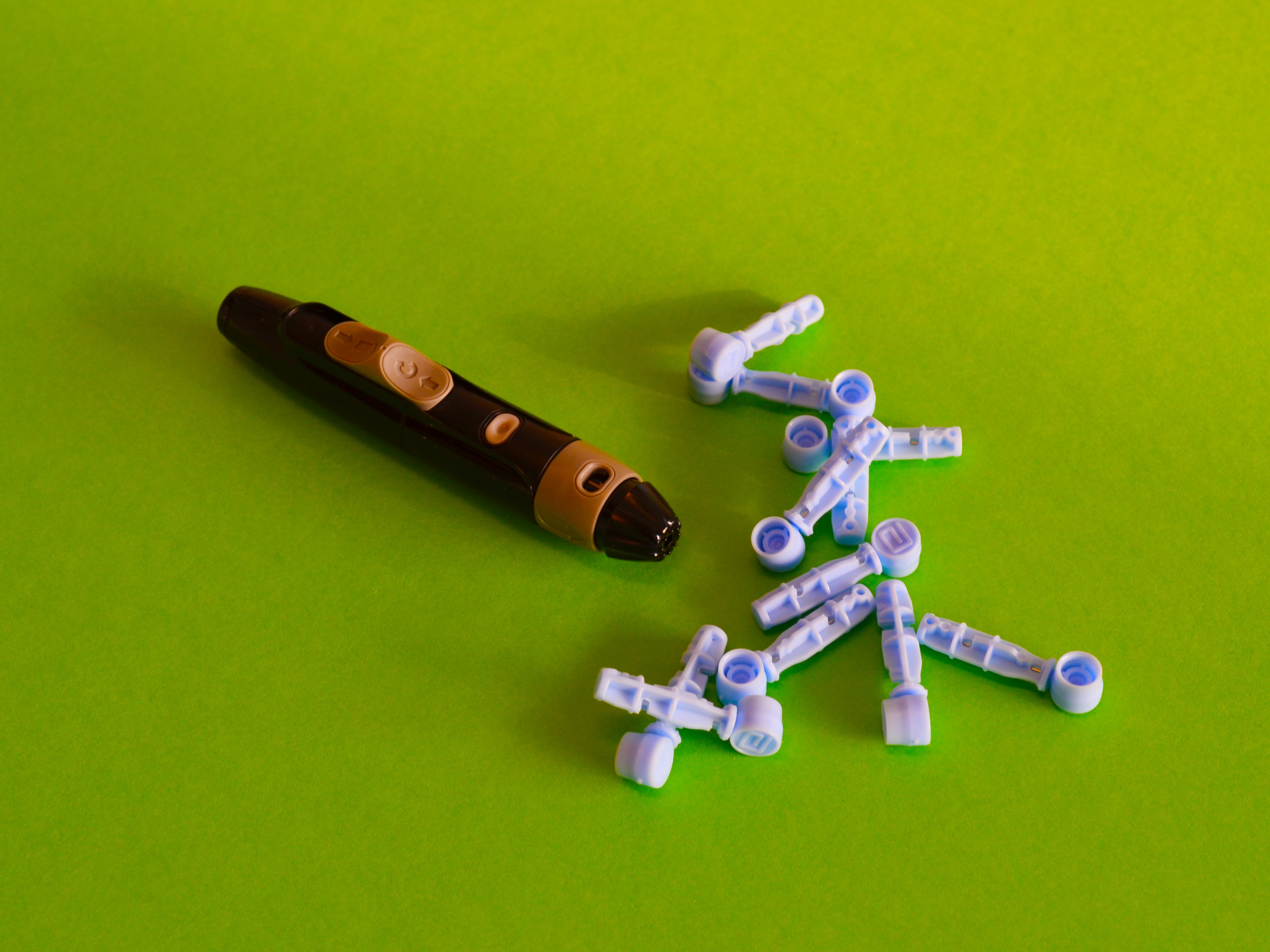
Related Posts

THE 6 KEYS TO FASTING SAFELY WITH HEART DISEASE
Related PostsIf you...

FASTING METHODS: THE CLEAN, THE DIRTY, AND THE FAUX
Related PostsLooking to...

HOW TO GET STARTED WITH FASTING
Related PostsYou may...

FASTING SAFELY AND SUCCESSFULLY WITH DIABETES
Almost ten percent of Americans have diabetes, and many more are at risk of developing Type 2 diabetes. Diabetes is a group of diseases that affect how your body uses glucose. Left untreated, it can be very serious. But diabetes can be helped with lifestyle changes alongside treatment from your doctor.
Fasting is a tool that has been useful for some people to reduce or eliminate their diabetes medications and possibly bring diabetes into remission. While some medications, like Jardiance, are very effective, fasting is free (and comes with numerous whole-body healing benefits).
The measurable benefits of fasting for diabetic people include regulation of blood sugar and insulin, as well as reduction of epicardial and visceral fat that is often a contributing factor to developing or worsening diabetes symptoms.
One of the damaging effects of diabetes is a decrease in the size of the LDL cholesterol particles. People with prediabetes, metabolic syndrome, and diabetes have an increased risk of atherosclerosis in the arteries of the heart, brain, and kidneys. The small LDL particles that result from the body’s fat overload are a contributor to artery damage. Fasting reduces the cardiovascular risk of heart attacks by helping the body increase the size of LDL particles.
The metabolic switch
In diabetes, as well as metabolic syndrome, the fat surrounding internal organs–visceral fat–and the fat surrounding the heart and blood vessels–epicardial fat–becomes bloated and dysfunctional. This dysfunctional fat is the source of inflammation and even damage to the heart and blood vessels. Dysfunctional epicardial fat is the common thread that ties diabetes to coronary artery disease, atrial fibrillation, heart failure, and stroke. A sustainable fasting lifestyle makes it possible for you to reduce epicardial fat.
Calorie restriction and very low carbohydrate diets can help with diabetes, but the improvement can be temporary. Fasting is also shown to be successful in reversing Type 2 diabetes. And there are ways to make fasting a sustainable and relatively painless practice in your lifestyle.
Fasting for one or several days flips a metabolic switch in our bodies so that instead of using glucose to produce energy, we start using stored fat for energy. The process of burning fat for energy reduces the inflammatory dysfunction fat stored in our body and around our hearts.
In people with diabetes, however, that metabolic switch is slow to turn on. Once your body has used all the stored glucose, there is a lag until your body starts to burn fat. The temporary lack of fuel can cause headache, fatigue, and dizziness, sometimes known as the “keto flu.” If you have diabetes and are interested in fasting, you may need to practice shorter fasts of 12-16 hours at first before trying anything longer.
Fasting is just one component of a healing lifestyle, but a powerful one. You’ll see greater benefits and less discomfort during a fast if you’re following a nutrient-dense diet, exercising, and managing your stress levels when not fasting.
Fasting safely
People with diabetes who fast have unique challenges with hypoglycemia, dehydration, electrolyte problems, and even the risk of provoking heart problems. There are important steps you need to follow to make sure you’re fasting safely.
The 7 steps to safe and successful fasting for diabetics:
- Make all plans for fasting in collaboration with your doctor.
- Select the frequency and duration of fasting that is best for you.
- Determine if clean fasting, dirty fasting, or fasting mimicking is best for you (see more about fasting methods here).
- Adjust your medications appropriately for fasting (see below).
- Monitor your blood glucose.
- Hydrate correctly.
- When in doubt, eat something, learn from your experience, and try to fast again.
If you have diabetes, always plan and collaborate with your doctor before undertaking a fast. Discuss the stability of your condition, your medications, and how to access medical care if needed.
Slowly build up your fasts
Fasting for a 12 to 16 hour period (for most people, overnight) will use up most of the glycogen stored in your liver, and your body will start to burn fat. This is the best way to start greasing the metabolic switch. This time-restricted feeding and other forms of intermittent fasting can be an effective weight reduction plan if you don’t overeat during your eating window, maintain a nutrient-dense diet, practice mindfulness, and exercise, including strength training. With proper planning, intermittent fasting is very safe for people with diabetes.
Fasting for one day with either no food or up to 25% of normal caloric intake is the next step in increasing your fast.
Longer fasts will promote greater weight loss and can promote healing autophagy, but they require more planning and monitoring. I do not recommend fasts longer than 3-5 days for anyone, since doing so can result in muscle loss and slowed metabolism. For the first couple of days of fasting, our resting metabolic rate (BMR, or basal metabolic rate) goes up, which is good to maintain weight loss. But after a few days, BMR starts to fall, and weight may be more difficult to lose or keep off.
Managing diabetes medications
You may need to adjust medications to prevent hypoglycemia when fasting, depending on what you are taking. Your physician needs to be involved with all decisions regarding medication change for fasting.
Read “Clinical Management of Intermittent Fasting in Patients with Diabetes Mellitus,” which is a good reference to work from with your doctor to make a plan for medication adjustments during fasting.
Monitoring blood sugar
Monitoring your blood sugar when fasting is important, and is critical if you are taking insulin or sulfonylurea medications, which are particularly prone to causing hypoglycemia. Measuring blood sugar as often as every couple of hours may be needed. Continuous blood glucose monitoring with a device such as the Abbott Libre Freestyle can be very convenient and make the experience of fasting safer.
If you’re not taking insulin or sulfonylurea medication, blood glucose monitoring can still be helpful to help you stay ahead of hypoglycemia. Fatigue, weakness, and headache, even in non-diabetic people, may actually be hypoglycemia, in which case it is time to eat something.
Many diabetic people who fast are able to reduce their medications with fasting. Don’t be disappointed if you are not using less medication after the first fast! Healing takes time, and fasting combined with exercise and a nutrient-dense diet will eventually produce results.
Hydrate correctly
Even though we drink plenty of noncaloric fluids while fasting (water, tea, and coffee if you choose), you’ll need to increase fluid intake to make up for the water content in food.
Most people with diabetes are salt-sensitive and salt-overloaded. In the typical American diet, 70 to 80% of salt comes from processed foods and only 5% from the saltshaker. In your kidneys, insulin causes sodium to be reabsorbed back into the blood. This is why many diabetic patients have to lower their salt intake to prevent blood pressure from going up. When fasting, the insulin level falls and so does the stimulation of the kidney to retain sodium. More sodium is excreted in urine and dehydration can occur.
Some people pee out as much as 10 grams (three teaspoons) of salt per day when fasting. Start with about 1 teaspoon of salt each day and increase if you are peeing a lot or have headaches, weakness, fatigue, or dizziness.
Fasting sustainably
Evidence of the benefits of fasting is growing. The average person can use fasting as a powerful tool not just for weight loss, but to improve health in many chronic conditions, including heart disease and its risk factors and diabetes.
Fasting can be a great way to lose weight, reduce your need for diabetes medications, and reduce the risk of heart disease. Fasting is safe for people with diabetes if you plan correctly in collaboration with your doctor.
Fasting is only helpful if it is a safe and sustainable lifestyle. If you are having unpleasant symptoms, don’t risk it; eat something. Be sure you are safe and comfortable and live to fast another day. There are health benefits from a fast of any duration. The success of fasting depends on the ability to do it repeatedly. Safe, effective fasting can be enjoyable!
Find upcoming community fast dates on our Events page.
